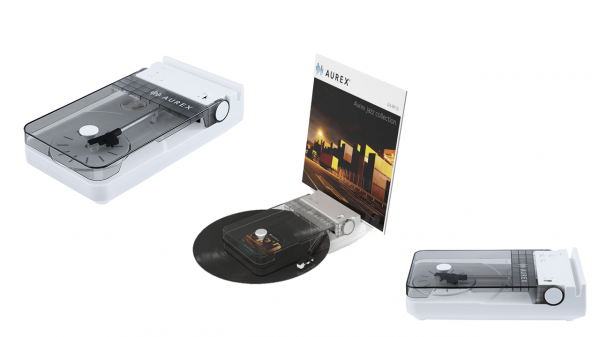There’s no doubt that consumer demand for ultra large screens at home is high. Spurred by 2 years of “house arrest” during the pandemic, TV buyers are choosing larger and larger screen sizes in order to replicate — perhaps even improve upon — the movie theater experience in their own living room or home theater. And while flat panel TVs are getting larger (and in some cases, cheaper), projectors still rule in the XXL TV category, at least in terms of price/performance. And their relative ease of installation and placement make UST projectors a solid choice for consumers and DIYers who don’t want to incur the expense or complexity of a professional projector installation.

While traditional TV makers like Samsung, LG and Hisense all offer their own UST projectors, there’s a new name in the UST space, and it’s one you may have heard of: Leica. Leica was founded in Germany in the late nineteenth century and quickly established itself as an industry leader for optical devices such as microscopes, cameras, binoculars and projectors. The company managed to survive two World Wars and has offered several innovations in the optical industry including the first stereoscopic microscope, the first 35mm camera and the first auto-focus system. And while the company did offer projectors previously (up until the late 1990s), these were primarily slide projectors. One thing the company has continued to offer is cameras and more importantly, lenses — a critical component of any optical system.
This year, Leica has partnered with TV manufacturer Hisense to offer its first “TV” product, the Leica Cine 1 UST projector (which we first spotted at CES 2023). Unlike traditional long throw projectors, UST (Ultra Short Throw) projectors can be placed right next to a wall and still produce a very large image. UST projectors also tend to have high overall brightness which makes them suitable for use in a living room or other well-lit area. With a high list price ($8,995 in 100-inch size or $9,495 in a 120-inch version), can the Leica survive in what is becoming a very crowded market for UST projectors? Let’s take a closer look.

Leica Cine 1 – Up Close and Personal
We got to spend some quality time with the Cine 1 at an event at the McIntosh House of Sound in New York City. The projector was on display in both its 100-inch and 120-inch versions. The two units look identical but each has been configured for a specific focal length in order to optimize the optics and image uniformity for each screen size. The Cine 1 features a 3-laser (RGB) lighting engine using Texas Instrument’s 0.47″ DLP chips with pixel-shifting to create full 4K resolution (3840×2160 pixels). You could call the Cine 1 a “Laser TV” since it uses lasers to create the visual image, but Leica chose the term “Cinema TV” probably because it sounds more refined.
The Cine 1 offers a max light output of 3,000 Lumens and reproduces over 100% of the BT.2020 color standard. Something we haven’t seen before is that the Leica Cine 1 offers support for both of the popular dynamic HDR formats: HDR10+ and Dolby Vision (in addition to HDR10 and HLG). This means the projector can exploit the full potential of virtually any 4K/UHD content on streaming platforms and on UltraHD Blu-ray Disc. The Cine 1 also includes an ATSC 3.0 tuner on board in case you live in an area with these broadcasts available.

What Makes the Leica Cine 1 Different?
Two things set the Cine 1 apart from the competition: Leica’s optical system (lenses) and the Cine 1’s industrial design. The Cine 1 features a substantial aluminum chassis with a simple yet elegant design. This is important as a UST projector is normally installed in a very visible location in plain sight on a credenza or TV stand. A motorized lens cover protects the optical system from dust while the unit it not in use. While a big plastic box may be acceptable in the $3,000-$4,000 price range, customers expect something better for $9,000.

The unit’s aluminum remote control also exudes quality, feeling hefty in the hand and featuring a simple yet comprehensive selection of buttons. Of course, you get volume, input and 4-way navigation controls, but there are also direct buttons for popular streaming services (Netflix, YouTube, Amazon Prime Video and Disney+). And since it’s based on the Google TV standard, the Cine 1 offers direct access to the rest of the popular streaming apps such as Apple TV+, Hulu, Vudu, Max, Peacock, Paramount+ and many many more. Music streaming apps such as TIDAL and Amazon Music are also available. During the demo, a company rep switched back and forth between sources and ran through the Google TV menus to illustrate just how responsive the GUI (graphical user interface) was. It’s as quick or quicker than any TV I’ve tested recently.

The Cine 1’s on-board Dolby Atmos support means you’ll be able to play your favorite movies, TV shows and music tracks in immersive Dolby Atmos surround. The on-board stereo speakers feature decent sound and 25 watts/channel of amplification. But to unlock the full audio potential, we’d recommend hooking up an A/V receiver (or at least a good soundbar) via the Cine 1’s eARC (enhanced Audio Return Channel) HDMI port. An optical digital output and an analog headphone output are also provided for maximum flexibility.

As for the Leica lens quality and optical system, we watched a few clips on the 120-inch version in a darkened home theater, with the Dolby Vision Ultra HD disc of “Top Gun Maverick” as the source. Colors were accurate and well saturated, detail was exceptionally good and motion handling was superb thanks to Leica’s own LIO (Leica Image Optimization) video processing.
In a different room, the company had the 100-inch version of the Cine 1 on display, playing “Avatar: The Way of Water” in a brighter living room setting. Even here, the image was punchy, dynamic and colorful, flexing its 3,000 lumens of max light output. As to whether the Cine 1 outperforms the competition, that wasn’t possible for me to gauge with no competitive units on hand, but the Cine 1 definitely provided an enjoyable, bright and dynamic image in both low and high ambient light settings.

Will the Leica Cine 1 Succeed?
At this point, it’s probably too early to tell whether the Cine 1 will succeed in the increasingly crowded UST marketplace. The unit’s elegant industrial design and strong performance may justify its higher price point. And Leica’s brand name and outstanding reputation in the camera and optical device market make it stand out from the traditional brands. The company has the unit for sale directly on its web site and through existing Leica dealers including B&H Photo and Video.
To succeed, the company will likely need to expand its dealer network to custom installers and integrators. Even though the Cine 1 is easy to set-up and configure, the audience for a UST at this price point is fairly limited. And many of the company’s prospective customers are likely to engage with custom installers to implement a solution like this. From conversations I had with company executives, expansion of the dealer and installer network, and installation of the Cine 1 projector in the company’s own showrooms is a top priority. Time will tell whether the UST market has room for a new player. Based on what I saw at the event, I’m optimistic.
Where to Buy the Leica Cine 1 UST projector:
- Leica Cine 1 UST Projector (120″) at B&H Photo and Video
- Leica Cine 1 UST Projector (100″) at B&H Photo and Video
Related Reading
































